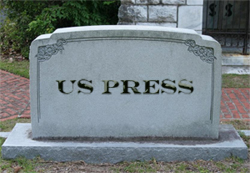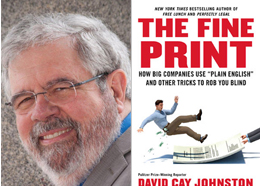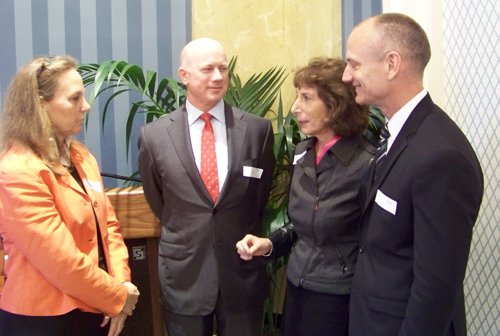One of biggest PR trends of 2013 was the move towards “sponsored” editorial content, also known as “branded” content or “native advertising.”
 The Custom Content Council says marketing budgets rose 13% in 2013 to an average of more than $5 million and that branded content made up 37% of that total. It says 80% of marketers see more such spending in 2014. “Content marketing has reached a perfect storm” involving all channels, says Lori Rosen, executive director of CCC.
The Custom Content Council says marketing budgets rose 13% in 2013 to an average of more than $5 million and that branded content made up 37% of that total. It says 80% of marketers see more such spending in 2014. “Content marketing has reached a perfect storm” involving all channels, says Lori Rosen, executive director of CCC.
Spurring the shift was the massive die-off of large portions of traditional media, a phenomenon that mirrored the massive die-offs of bees, a development that has aroused near-hysteria in the food supply and scientific communities since about one-third of the world’s food production is threatened.
Pesticides and fungicides are among the culprits being blamed for this disaster. Fingers are pointing at such companies as Monsanto, DuPont, Bayer, Syngenta and BASF.
 The die-off of so many traditional media is the result of the shift of ad dollars to new media such as the web (Google’s AdWords pulled in nearly $50 billion in 2013) which basically starved oldline media. Newspaper ad revenues plunged to $23 billion from $46 billion six years earlier.
The die-off of so many traditional media is the result of the shift of ad dollars to new media such as the web (Google’s AdWords pulled in nearly $50 billion in 2013) which basically starved oldline media. Newspaper ad revenues plunged to $23 billion from $46 billion six years earlier.
Editorial types, like the scientists worried about bee deaths, fret about the death of such a large part of the independent press and fear this will impact democracy, which depends on consumers getting the facts about products, services and government itself. Especially worried is Dave Carr of the New York Times who says the credibility of the “village common” is being threatened—“that place where we all meet to discuss our problems.”
 David Cay Johnston, commenting on sponsored content, asks, “How many investigations have you seen of unsavory practices of department stores and grocery chains, two of the biggest print newspaper advertisers?” He is the author of The Fine Print: How Big Companies Use “Plain English” to Rob You Blind, and also Free Lunch and Perfectly Legal.
David Cay Johnston, commenting on sponsored content, asks, “How many investigations have you seen of unsavory practices of department stores and grocery chains, two of the biggest print newspaper advertisers?” He is the author of The Fine Print: How Big Companies Use “Plain English” to Rob You Blind, and also Free Lunch and Perfectly Legal.
Some reporters are saying, in effect, “First they starved us half to death and now they want to poison the survivors.”
Author Fraser Seitel (The Practice of PR) argued in a column Dec. 20 on odwyerpr.com that “Sponsored Content Is Here to Stay.”
He describes it as “Content authored and paid for by PR professionals, placed in news site news columns, shoulder-to-shoulder with real news, to appear to look like the real thing.” He says most readers understand what it is and media need the revenue. Many of the “most venerable” names in the media are taking part of the estimated $1.5 billion in such ads, he says.
The best route to credible ad content that is indistinguishable from the regular content is to hire one of the publication’s own writers or create a special section with the assistance of the publication. Richard Edelman, in a July 13 extensive examination of sponsored content, calls this “paid co-creation,” saying “It’s potentially a win for the reader, marketer and publisher.”
Edelman notes that sponsored content is an old idea. One version of this was long-copy ads. The topic had to be a current one and many new things had to be said.
This writer is reminded of his first job at the Connecticut Post where one of my assignments was working directly for homebuilders who took ads in a Sunday supplement. I went to half a dozen subdivisions and wrote about the homes, special features, prices, etc. A Post photographer took pictures. I got paid $15 for each feature. I didn’t realize I was doing “PR.”
Another instance was working for the St. Raphael’s marching band which wanted publicity so it could raise funds to compete in a national event. The editor suggested they hire me and I got a half dozen placements in the paper describing the band and its quest. Pay was about $15 per placement. The Post was very Establishment-oriented. At least four reporters quit after their stories about housing policies and other subjects irked civic leaders and brought the wrath of editors.
Companies and institutions that want control over stories about them should approach media directly since they will not only have proven staff writers but access to a raft of experienced freelancers. This could cut into the revenues of PR firms if enough advertisers do this.
Lost in this shuffle is the press conference or any format where experts toss questions at CEOs and other news sources. Sponsored content is “canned” content and consumers are not apt to be satisfied with it for very long. Edelman says it must “invite public discourse.”
 Members of PR Society:NY who gathered for the last regular meeting May 8 at the Penn Club included, left to right, Abigail Gouverneur Carr of Deloitte; Bill Collins, Ford Motor Co.; Jill Totenberg, the Totenberg Group, and Toby Usnik, Christie’s. The group will meet informally in the fall. Gabriela Stern, deputy managing editor, Wall Street Journal Digital Network, was the final speaker. |
Ad spending patterns of major companies have erased seven PR print publications since 1998—Reputation Mgmt. Magazine and the printed NL of Paul Holmes; PR Quarterly; PR Reporter, and the weekly Ragan Report and Ragan’s PR Intelligence Report and quarterly PR Journal.
Tight budgets plus the security-conscious publicly-held ad/PR conglomerates (led by some of the highest paid executives in the world) erased almost all of the more than 25 PR groups that thrived in New York in the 1960s and 70s. PR Society: New York (GREG: RUN PIX) gave up the ghost in May after more than 50 years.
Although hundreds of New York PR people attended a combined Holiday party some years ago, and numerous major companies also sponsored such parties, we heard of no New York PR Holiday parties at all this year. PRSA/New York had set one for Dec. 15 at Pier 62 in Chelsea but various elements “did not come together” and it was re-scheduled as a “2014 Forward Party” Jan. 15 from 6 to 9 p.m., said 2014 chapter president Henry Feintuch.
In a typical inconsistency for the Society, PRSA’s 2014 chair Joe Cohen said in the December Tactics that PR people have been talking about “getting a seat at the table” but that is “no longer enough.” It is now about having a “lead seat,” said Cohen, who on Oct. 26 let the Assembly give his CEO title to Bill Murray without a peep of protest.
Whether to take statins for heart health will be a topic in 2014. Dr. David Perlmutter says statins are over-prescribed and can lead to memory loss and other brain maladies. He advises proper diet and exercise.


 AB InBev has hired Donna Lorenson as chief communications officer and elevated the PR function to the senior leadership structure in the aftermath of the Bud Light marketing disaster.
AB InBev has hired Donna Lorenson as chief communications officer and elevated the PR function to the senior leadership structure in the aftermath of the Bud Light marketing disaster. Tunheim handled the Minnesota USA World Expo bid committee, which on June 21 congratulated Serbia for landing the 2027 event.
Tunheim handled the Minnesota USA World Expo bid committee, which on June 21 congratulated Serbia for landing the 2027 event. United Minds, management consultancy, has launched Myriant, a business resiliency offering to help clients deal with the challenges during this era of misinformation, polarization and geopolitical upheaval.
United Minds, management consultancy, has launched Myriant, a business resiliency offering to help clients deal with the challenges during this era of misinformation, polarization and geopolitical upheaval.  ImageShield, which guards against online image abuse, is looking for a communications pro to handle its PR and marketing campaigns.
ImageShield, which guards against online image abuse, is looking for a communications pro to handle its PR and marketing campaigns. Who knew that there is a real paper company, Pennsylvania Paper & Supply, inside the iconic building seen at the opening of every episode of “The Office?”
Who knew that there is a real paper company, Pennsylvania Paper & Supply, inside the iconic building seen at the opening of every episode of “The Office?” 


 Have a comment? Send it to
Have a comment? Send it to 
No comments have been submitted for this story yet.